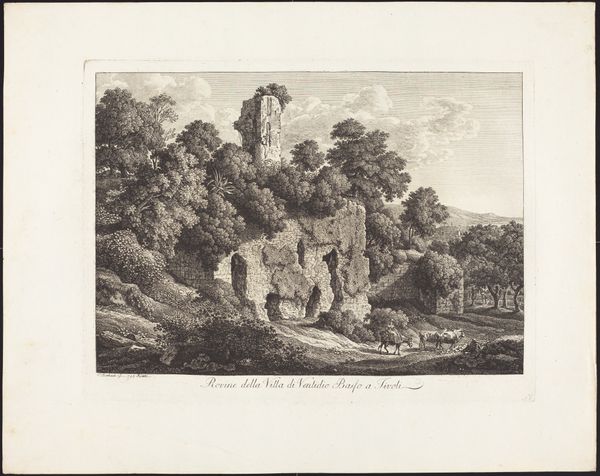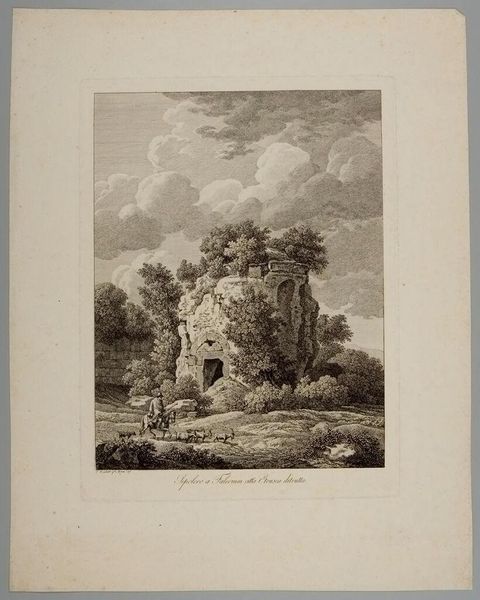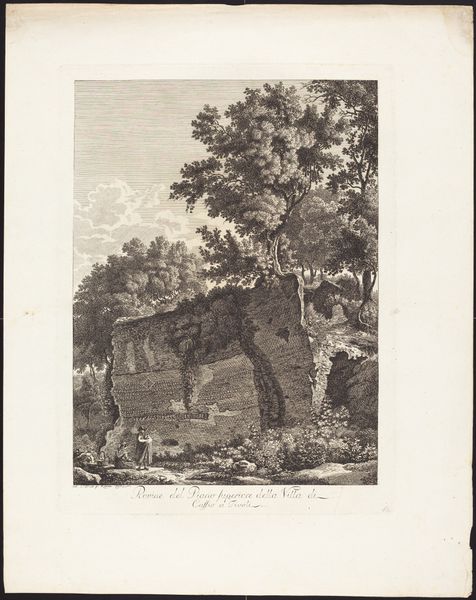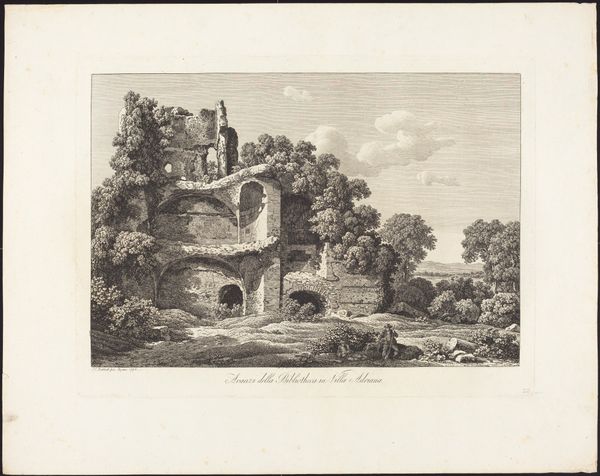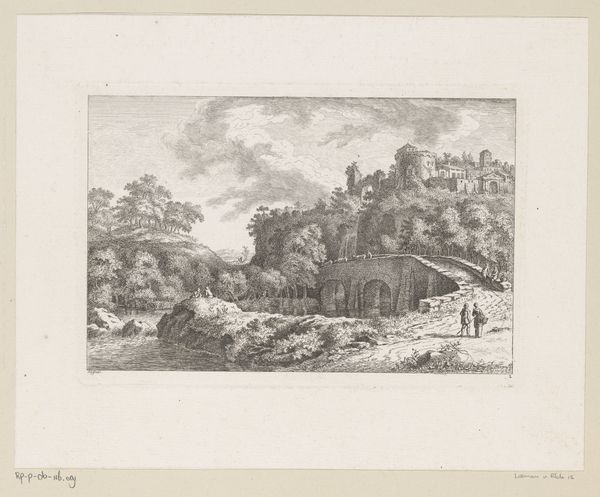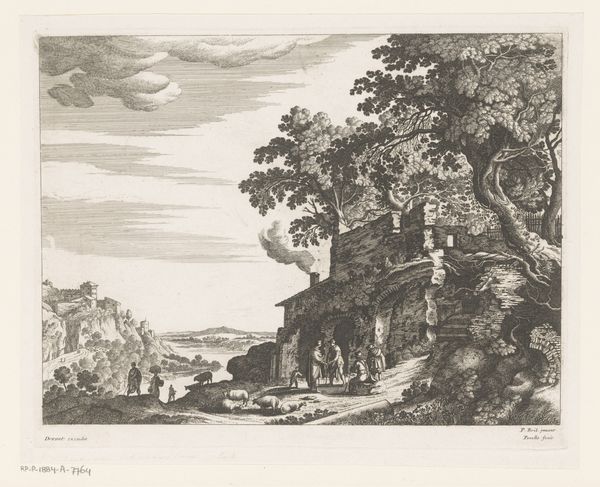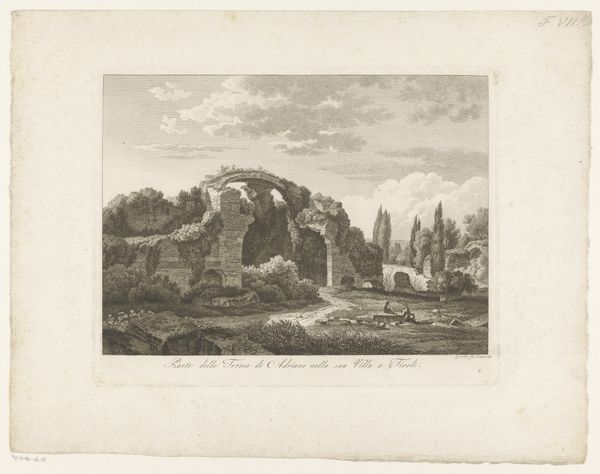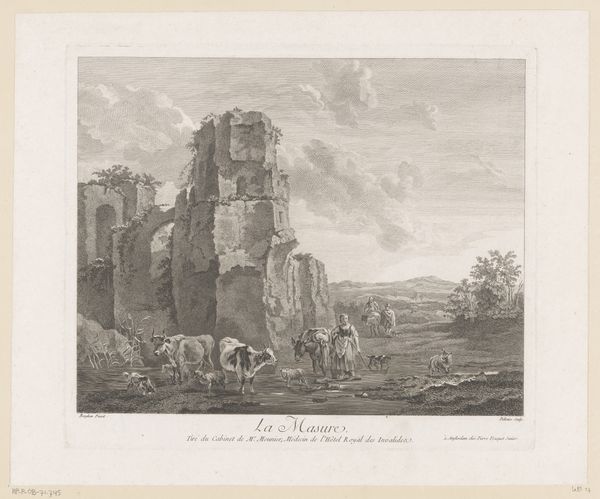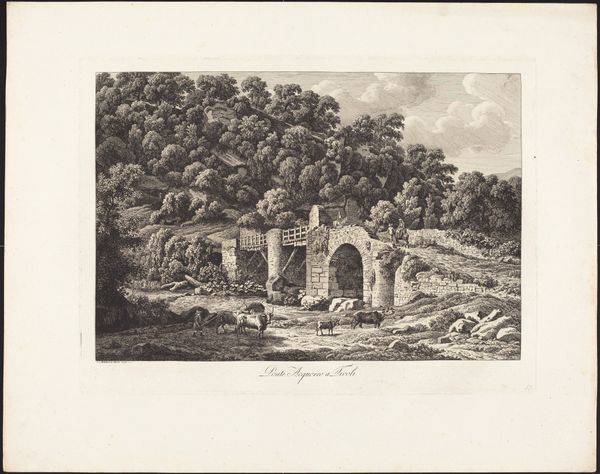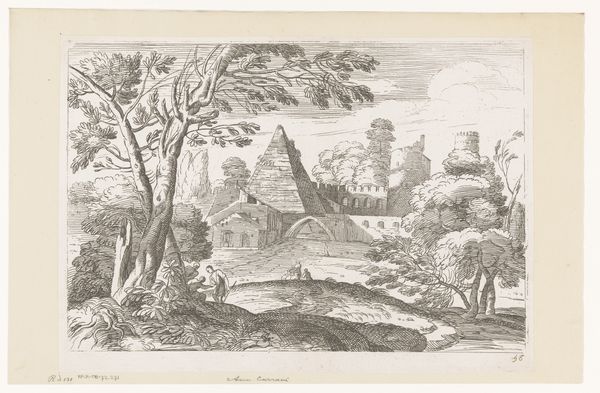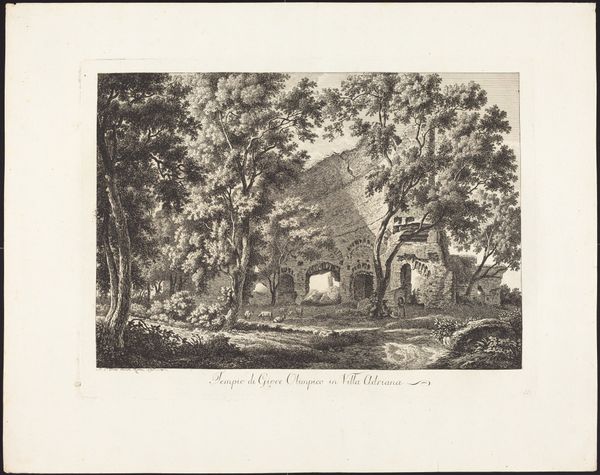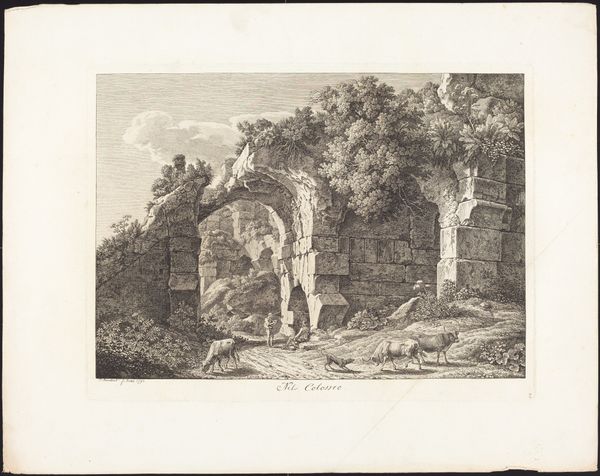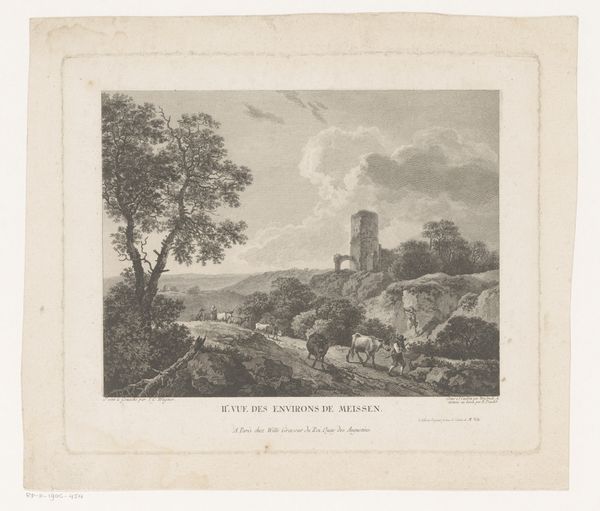
print, engraving
#
ink drawing
# print
#
landscape
#
romanticism
#
history-painting
#
engraving
Dimensions: plate: 37.9 x 28.4 cm (14 15/16 x 11 3/16 in.) sheet: 49 x 39.4 cm (19 5/16 x 15 1/2 in.)
Copyright: National Gallery of Art: CC0 1.0
Johann Christian Reinhart made this etching, Sepolcro a Falerium città Etrusca ditrutta, using a metal plate and acid. Rather than the direct touch of a drawing, here the image emerges through a laborious, indirect process. Look closely, and you can see how the etching captures a vision of the ancient world in decay. The very technique used - acid eating away at metal - mirrors the scene's theme of erosion and ruin. Note the precision required to create such fine lines and details. The artist carefully controlled the depth of the lines by regulating the time of exposure to acid, showing the skill and time needed for the prints. Consider the social context: prints like these were part of a growing market for picturesque views. They catered to a public eager to consume images of faraway places, fueling a culture of collecting and display. So, this etching isn't just a picture; it's an artifact of its own time, reflecting the era's fascination with the past and the commodification of art.
Comments
No comments
Be the first to comment and join the conversation on the ultimate creative platform.
